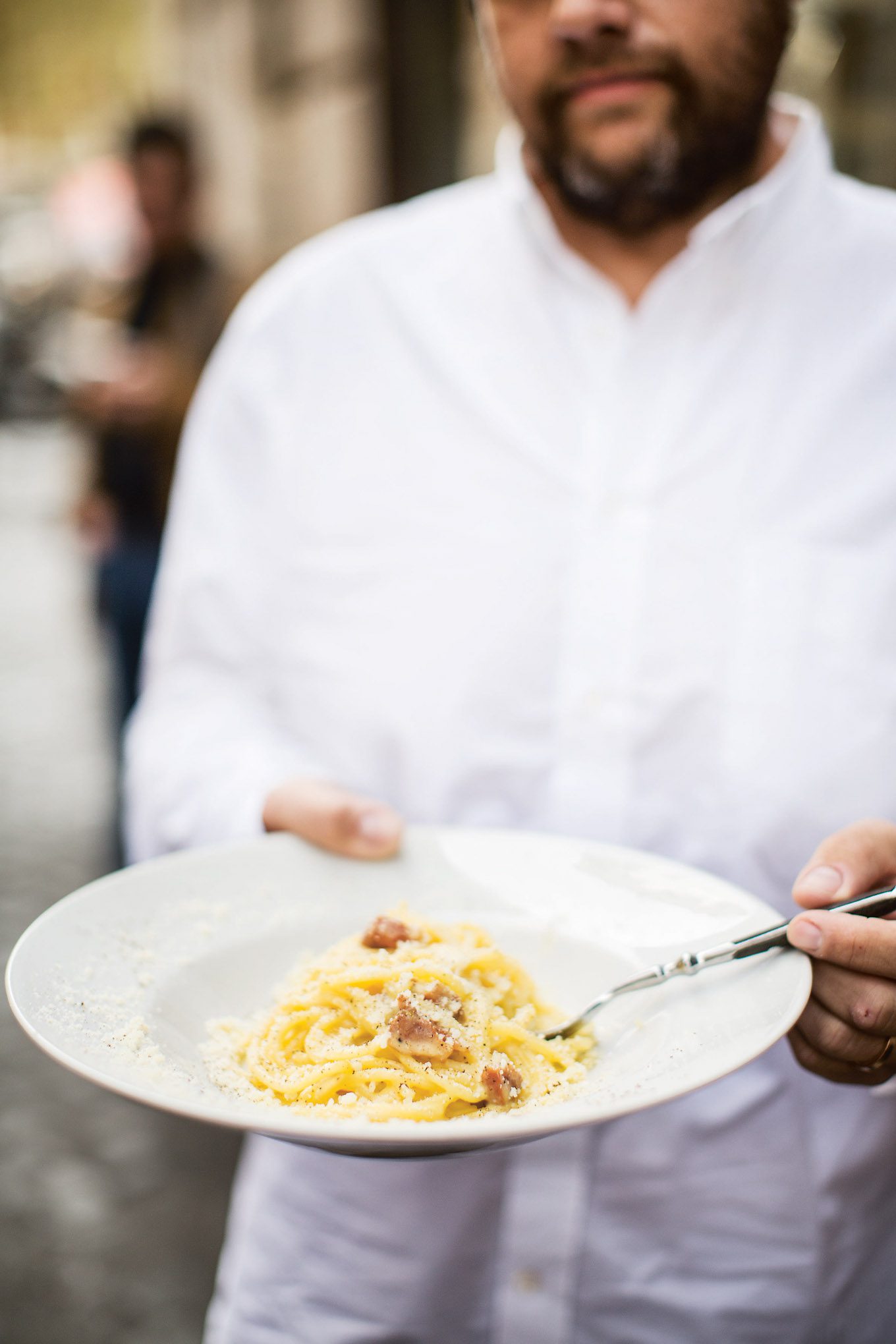
Words by Katie and Giancarlo Caldesi. Photo by Helen Cathcart.
I have eaten a lot of carbonara in Rome in the name of perfecting this recipe, so I hope my larger dress size is worth it! Some have been too cloying, others are bland, a few tasted of cinnamon (a coating used on some cured meats) and many are served with chewy guanciale, the cured, fatty pork cheek that gives this dish its flavour. The best carbonara in Rome that we found was at Roscioli followed by a close second at Felice in Testaccio. It might be because it’s a deli and restaurant that Roscioli have the best guanciale – they use unusual crushed peppercorns and bright yellow eggs from corn- fed chickens – but I think it’s in their cooking.
Equally perfect bowls of this famous pasta can be made at home with pancetta or good-quality streaky bacon, thickly sliced from a good butcher. Make sure it is fatty and for extra flavour use a tablespoon of rendered pork fat. Alessandro Roscioli uses an iron frying pan to crisp up the cubes of guanciale so that they are crunchy on the outside and soft on the inside; they become like the best pork scratchings you have ever munched on, all combined with pasta in a peppery cheese coating. Incidentally, carbonara is named after the carbonari: the charcoal men who fed themselves on the cured meat, cheese and pasta they carried with them into the forest. Presumably black specks of charcoal gave it extra flavour although now they are replaced with pepper.
Craving more authentic Italian recipes like this perfected carbonara? Discover a world of Roman culinary delights in our Katie and Giancarlo Caldesi's 'Recipes from Rome' cookbook. Delve into the secrets of Rome's finest dishes and bring the taste of Italy into your kitchen.